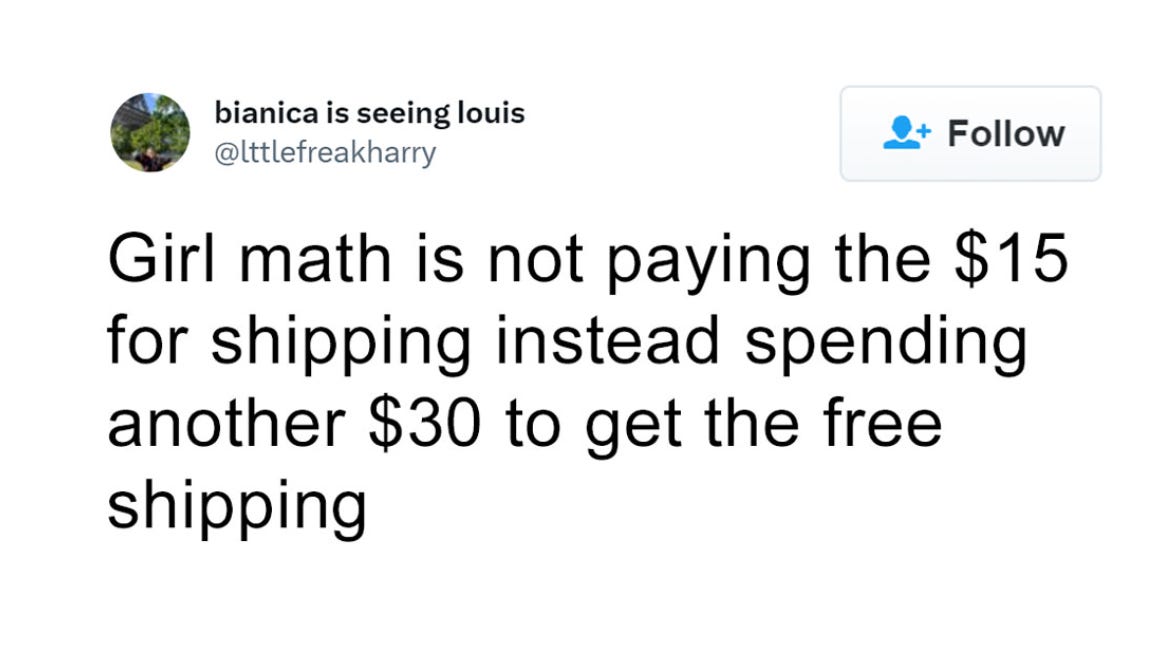Being thrown into sandwich caregiving has been a bootcamp in a layer of financial responsibility that before my late 30s, I had hardly given much thought to. Many of us had probably known kids would be expensive, but in a way that “normal” employed adults can handle. Maybe saving for college and retirement would be a little challenging, but our parents would be there aging in place and helping out as engaged grandparents.
In reality, had no idea how much we would end up spending on childcare and all of the other expenses. And I really never gave much thought to the world of elder care that I’m now deeply entrenched in. In my last newsletter I shared the shocking bill I received for $58,000 from my mother’s nursing home, where thankfully she will be able to go on medicaid when she runs out of money. Turns out that is “normal” and just the tip of the iceburg. Most of us are more than happy to spend our money on those we love, the problem is that for so many, it has gotten completely unsustainable, and caregivers feel alone not only in caring, but that they are financially forgotten and drowning.
So, let’s play with the TikTok #girlmath trend through a caregiving lens. Turns out care math is much less benign and much more absurd!
Actually, care math is probably more in the vein of the “boy math” that followed on its heels.
Care math for parents is…
Care math is annual daycare in Seattle averaging over $14k per child, where in-state college tuition is $11k.
Care math is having no idea where anyone actually only pays $14k per year, because you have only found available options that cost nearly twice as much.
Care math is the tax break for said $14-30k childcare cost being capped at $3k.
Care math is childcare increasing at double the rate of inflation, and 220% since 1990.
Care math is over 20% of annual household income being spent on childcare, while care workers themselves make close to minimum wage.
Care math is women still doing double the household and care labor even when contributing almost half (or more) of total income.
Care math is schools that get out at 2:25pm when you work until 5pm, and being closed for five weeks during the school year when you get 3 weeks paid time off work.
Care math is having your whole summer planned out by mid January so that you have a chance at the limited summer childcare spots that we call “camp.”
Care math is being excited for kids to start free public school, only to realize you will still be paying $4,000 per year in said summer camps.
Care math for the elderly is….
Care math is nursing homes that accept medicaid for people who can’t afford $10k/month, but only if you have $10k/month for at least a year to spend down first.
Care math is paying for long term care insurance only to find out that none of your preferred care options are accepted.
Care math is insurance deciding that your elderly parent in nursing care has not progressed enough for them to continue paying for nursing care, but also not well enough to safely return home, forcing you to pay the $500/day out of pocket to stay.
Care math is paying $500/day for nursing care, only to receive another bill for several hundred because medications are not included.
Care math is your parents not being able to afford assisted living or nursing care, so they move in with you but then you have to quit working to care for them so you both end up broke.
Sandwich Generation math is
***see all of the above***
Care math makes no sense - especially when the cost and burden is entirely privatized. I hope that pointing this out will bring awareness to the importance of care policy and activism, especially in an election year.
But also, funding can’t force people to care. And it shouldn’t.
Money will not entirely solve our care problems. There are components to care that can’t and will likely never be outsourced or financially compensated. Love and empathy are at the heart of caregiving and can’t be bought. Similarly, having to spend money on kids and parents and caregiving isn’t in and of itself isn’t the problem. But when care is so undervalued and individualized that it pushes people into poverty — we have to wonder what has happened to our priorities as humans.
Caregivers and those who need care deserve adequate resources to live with safety and dignity, even before and after their prime productivity years.
Do you have other unbelievable examples of care math? Are you tracking initiatives aimed to increase funding for care at the federal and state levels? I highly recommend signing up to receive information from Caring Across Generations to follow care-related activism in the United States.
For my UK readers, how do these stats compare to your examples of care maths?
As always, I look forward to your thoughts, comments, and ideas. xo
📚 Reads
The Every Family For Themselves Fight for Summer Camp
Grandparents are Getting Older, on Average. Here’s Why that Matters
The Child Tax Credit deal is great, but it’s not a solution to the childcare crisis
For New Moms in Seoul, 3 Weeks of Pampering and Sleep at a Joriwon (I’m done having kids but… sign me up!)









Great piece, thanks for linking to my work on summer camp!
Another amazing piece, Anna. But whew it’s tough to read. Care math is intense these days. Thank you for shedding light in it and continuing the conversation about our unsustainable society.